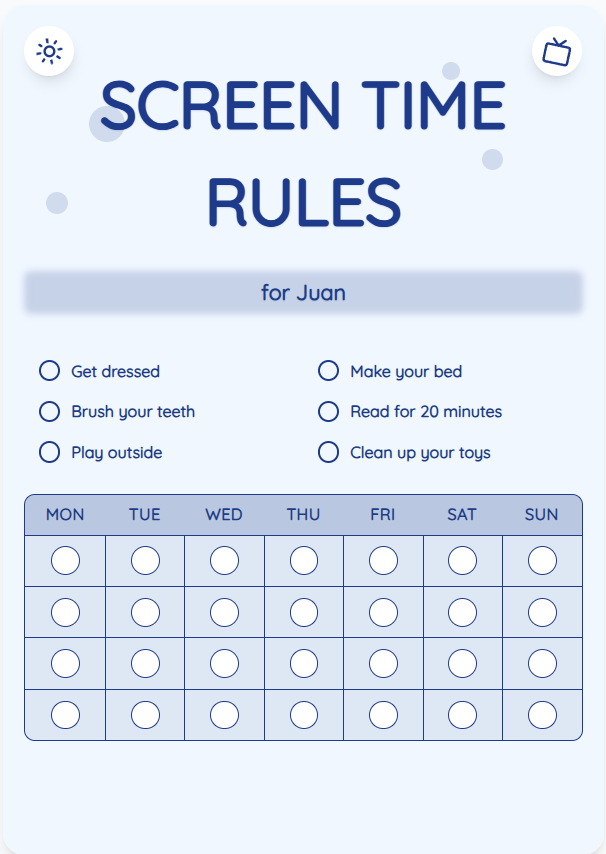How Screen Time Impacts Children's Brains: A Guide for Parents
As a parent, you may wonder how excessive screen time influences your child's developing brain. Understanding the effects is crucial for promoting healthy cognitive development. In this guide, we'll delve into the relationship between screen time and children's brains, offering practical strategies to support your child's well-being and family harmony.
See What Your Screen Time Chart Will Look Like
Here's an example of a beautiful, customizable screen time rules chart you can create for your family

The Impact of Screen Time on Developing Brains
Excessive screen time can have various effects on children's developing brains. Research suggests that prolonged exposure to screens may lead to attention issues, poor sleep quality, reduced social skills, and decreased academic performance. Understanding these impacts is the first step in mitigating potential risks.
Practical Tips for Managing Screen Time
1. Set clear screen time limits based on your child's age and maturity level. 2. Encourage outdoor play and other non-screen activities. 3. Use screen time charts as visual aids to help children understand and adhere to limits. 4. Create tech-free zones in your home, such as bedrooms and meal areas. 5. Engage with your child during screen time to promote active viewing and discussion. 6. Role model healthy screen habits by limiting your own device use.
Put These Tips Into Action
Create a custom chart to implement these strategies with your child
Balancing Screen Time with Other Activities
Finding a balance between screen time and other activities is key to supporting your child's overall development. Encourage hobbies, sports, reading, and social interactions to provide a well-rounded experience for your child. Limiting screen time can free up time for these enriching pursuits.
Practical Tips for Success
- Set clear and consistent screen time rules
- Encourage outdoor play and physical activities
- Use screen time charts to visualize limits
- Engage in discussions about digital content
Frequently Asked Questions
How much screen time is appropriate for children?
The American Academy of Pediatrics recommends no more than 1 hour of high-quality screen time per day for children ages 2-5. For older children, consistent limits should be set based on individual needs and activities.
Can screen time affect my child's sleep?
Excessive screen time, especially before bedtime, can disrupt a child's sleep patterns. The blue light emitted by screens can interfere with the production of melatonin, making it harder for children to fall asleep.
How can I help my child reduce screen time without conflicts?
Involve your child in creating screen time rules to promote ownership and understanding. Offer alternative activities and rewards for limiting screen time. Consistent enforcement and positive reinforcement can help reduce conflicts.
By understanding how screen time impacts children's brains and implementing practical strategies like using screen time charts, you can empower your child to develop healthy tech habits. Remember, moderation is key in fostering a balanced lifestyle for your child. Visit ScreenTimeRules.com for customizable screen time charts tailored to your family's needs.
Ready to Transform Your Family's Screen Time?
Join thousands of parents who have successfully managed screen time with our customizable charts.
